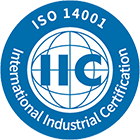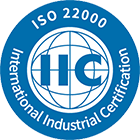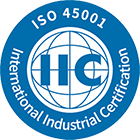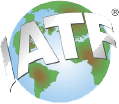ISO 9001

(1) Background
The certification system of ISO 9001 is to evaluate the supplier’s quality management system and approve the certification whether it is in compliance with the ISO 9001 International Standard requirements. This system is applicable to all industrial areas such as production, construction, public administration service, finance and more. This standard is maintained by TC 176 (Technical Committee), whose members have been experienced in the various industries. It is revised and reinforced periodically. In the past, the second (1994), the third (2000) and fourth (2008) revisions were used after the first publication in 1987. Currently, the fifth revision (2015) published on 15 September 2015 is applicable and still used as a national standard in many countries. In basicea, it is controlled as KS Q 9000 series.
(2) Benefits of ISO 9001 Certification
- Enhancing global competitive edge on product and service.
- Reducing defective product and customer claim.
- Increasing customer satisfaction and reliability.
- Improving work performance and increasing in sales.
ISO 14001

(1) Background
ISO 14001, one of ISO 14000 series standard and built by ISO, is an International Standard for Environmental Management System to support a series of management activities to continuously improve the environmental performance through life cycle of organization’s activities, products, and services. Like ISO 9001, this is the certification system that the 3rd party certification body conducts the audit on the organization’s environmental management system and ensures whether it conforms to the requirements. This standard includes major requirements for operating an efficient environmental management system, including environmental aspects and impacts on all processes, products and services carried out within the company. This standard is designed to evaluate the environmental management system of suppliers and made to apply for the various industries such as manufacture, construction, and service. In the past, the first (1996) and the second (2004) revisions were used. Currently, the third revision (2015) published on 15 September 2015 is applicable.
(2) Benefits of ISO 14001 Certification
- Saving resources through clear authority and responsibility.
- Improving the cost management through recycling.
- Reducing environmental accidents.
- Enhancing company image and reliability in local community.
- Complying with legal environmental requirements.
ISO 22000

(1) Background
ISO 22000 is an internationally recognized standard that combines the ISO9001 approach to food safety management and HACCP for the assurance of food safety at all levels. The second edition ISO 22000:2018 cancels and replaces the first edition ISO 22000:2005, which has been technically revised through the adoption of a revised clause sequence. It also incorporates the Technical Corrigendum ISO 22000:2005/Cor.1:2006.
(2) Benefits of ISO 22000 Certification
- Complying with legal requirements and preventing from food safety accidents through system management.
- Preventing cross contamination through application of perquisite programs and HACCP principles.
- Maintaining the effective communication among supplier, customer and interested party within food chain.
- Increasing customer satisfaction related to food safety.
ISO 45001

(1) Background
ISO 45001 which was previously known as OHSAS 18001 is a Standard for OH&S management system to give guidance for its use, to enable organizations to provide safe and healthy workplaces by preventing work-related injury and ill health, as well as by proactively improving its OH&S performance.
(2) Benefits of ISO 45001 certification
- Continual improvement of OH&S performance.
- Fulfilment of legal requirements and other requirements.
- Achievement of OH&S objectives (Reduction of accident and company liability, protection of organizational loss, securing external trust, etc.).
ISO 13485

(1) Background
ISO 13485:2016 specifies requirements for a quality management system where an organization needs to demonstrate its ability to provide medical devices and related services that consistently meet customer and applicable regulatory requirements. This is applicable to the organization involved in design and development, production, storage and distribution, installation, or servicing of a medical device and related services. ISO 13485 is aligned with European medical device directives; therefore, its implementation helps to fulfill the requirements of these directives such as CE marking. In order for marketing in the European country, the CE mark is mandatory to display on the device.
(2) Benefits of ISO 13485 Certification
- Harmonized standard for CE marking medical devices recognized by the European Commission.
- Improvement of credibility and image to have a system in place and show compliance.
- Improvement of customer satisfaction by assessing customer needs and expectations.
- Improvement in process to eliminate waste, reduce errors and avoid rework.
- Decision-making based on facts and data.
- Better employee engagement to increase efficiency and productivity.
IATF 16949

(1) Background
ISO/TS 16949 (1st edition) was originally created in 1999 by the International Automotive Task Force (IATF) with the aim of harmonizing the different assessment and certification systems worldwide in the supply chain for the automotive sector. Other revisions were created (2nd edition in 2002, and 3rd edition in 2009) as necessary for either automotive sector enhancements or ISO 9001 revisions.
In preparation for migrating from ISO/TS 16949:2009 (3rd edition) to this Automotive QMS Standard, feedback was solicited from certification bodies, auditors, suppliers, and OEMs to create IATF 16949:2016 (1st edition), which cancels and replaces ISO/TS 16949:2009 (3rd edition).
(2) Benefits of IATF 16949 Certification
- Improvement of product and quality control
- Gaining credibility among international trades
- Avoiding product defects and minimizing waste
- Reducing change risk in supply chain
- No need for multiple certification
(3) Structure
- a. IATF: International Automotive Task Force is a group of automotive manufacturers and their respective trade associations, formed to provide improved quality products to automotive customers worldwide.
- b. IAOB (International Automotive Oversight Bureau): One of 5 oversight offices created by IATF to oversee the certification bodies who perform the audits and issue certificates i.e. ANFIA, IAOB, IATF France, SMMT, VDA/QMC.
- c. AIAG (Automotive Action Industry Group): Collaborates with IATF and 5 Oversight groups developing standard and core tools (FMEA, Control Plan, SPC, MSA, etc.)
(4) IATF Members
- a. Automobile Manufactures
- BMW Group
- Daimler AG
- Fiat Auto
- Ford
- General Motors
- PSA (Peugeot Citroen)
- Renault
- Volkswagen AG - b. National Trade Associations
- AIAG (USA)
- ANFIA (Italy)
- FIEV (France)
- SMMT (UK)
- VDA (Germany)
ISO 22716
(1) Background
ISO 22716:2007 gives guidelines for the production, control, storage and shipment of cosmetic products. These guidelines cover the quality aspects of the product, but as a whole do not cover safety aspects for the personnel engaged in the plant, nor do they cover aspects of protection of the environment. The guidelines in ISO 22716:2007 are not applicable to research and development activities and distribution of finished products.
(2) Benefits of ISO 22716 Certification
- Adhering to EU Cosmetic Regulation 1223/2009.
- Reducing cosmetic product hazards and meeting in Good Manufacturing Practices.
- Ensuring quality and safety compliance of cosmetic products.
- Supporting legal compliance from international regulators.
HACCP
(1) Background
HACCP (Hazard Analysis Critical Control Points) is a combination of HA (Hazard Analysis) and CCP (Critical Control Point: Critical Control Points), and is called 'Hazard Analysis Critical Control Points'. HACCP started in the United States as a methodology for manufacturing safe food by deriving hazardous factors that can affect the human body and managing the hazardous factors derived efficiently, and is now widely spread around the world.
(2) Benefits of HACCP Certification
- Enhancing the food safety: By conducting hazard analysis, it is possible to objectively and scientifically evaluate and manage the existing manufacturing and cooking methods, and clearly deduce the targets to be managed.
- Reinforcing competitiveness: By implementing HACCP, the purchase of safe food material, safe manufacturing, safe food processing and safe food distribution can be achieved and thus the company has a competitive edge based on consumer trust and confidence. In addition, it is possible for creating substantial profits by reducing defective and returned products, enhancing productivity, and extending the shelf-life from systematic management and continual development in various fields such as the production environment, workers and production facilities.


